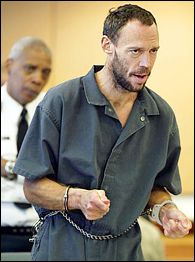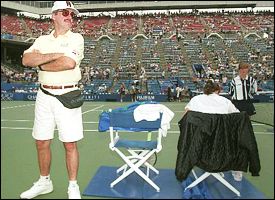| ESPN.com: Page3 |
 | |
| William Lepeska was on the prowl one more time, questioning Anna Kournikova while acting as his own attorney in court. |
| STALKER SERIES |
|---|
| Anna Kournikova, Kyra Elzy and Annika Sorenstam are among female athletes who have been victims of stalkers. In our special series, P3 takes a closer look at the mind of the obsessive fan. • Double fault: Sex sells the female athlete, but many stars have found it attracts unwanted attention. • Object of unwanted affection: From the frenzy surrounding the Lady Vols, former star Elzy found herself in the crosshairs of a stalker. • The obsessive obsession: Most stalkers are males in their 30s with checkered pasts. |
 | |
| Prosecutors show pictures of graffiti on the walls of Robert Dewey Hoskins' jail cell that read "The Madonna Stalker," "I Love Madonna," and "Madonna Love Me." |
 | |
| After Monica Seles was attacked, security stood vigil behind her whenever she took the court. |
| When I was young, I was a big fan of [actor] Kirk Cameron. I sent him a letter, but that's the point you should take it to. -- Summer Sanders, on being stalked |
 | |
| Albrecht Stromeyer |
 | |
| James Conyers |
| In today's world, that's what we're continually preaching: Be aware of your surroundings. -- USOC security chief Larry Buendorf |
 | |
| Dubravko Rajcevic, in court for violating a restraining order, was sentenced to two years in prison for stalking Martina Hingis. |